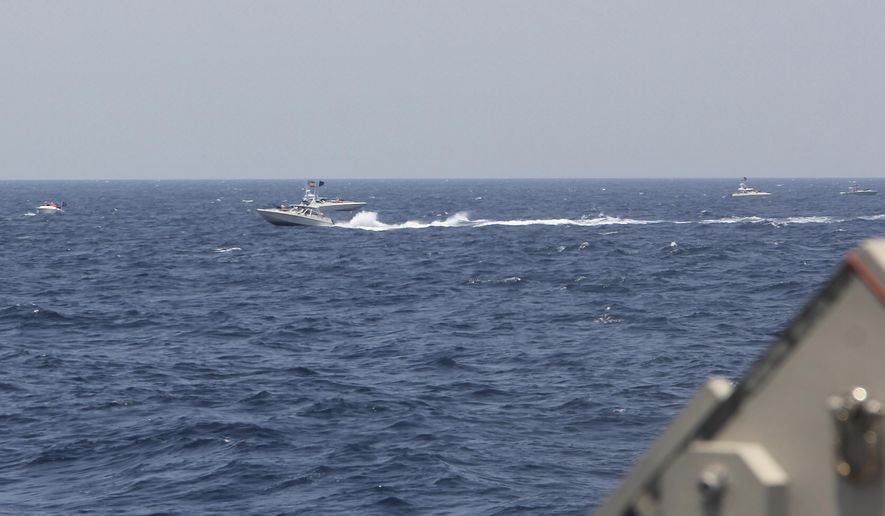The U.S. and Iran traded blame Tuesday for an incident in the Strait of Hormuz over the weekend that saw a U.S. Coast Guard cutter fire warning shots at armed Iranian speedboats.
While Pentagon officials said they don’t know what prompted Iran’s Islamic Revolutionary Guard Corps Navy (IRGCN) to engage in a high-speed charge at U.S. vessels that triggered the warning shots, some analysts say Tehran’s actions could be tied to recent nuclear talks.
The Biden administration has been trying to revive the 2015 Iranian nuclear deal that has foundered since former President Trump pulled the U.S. out of it in 2018, and some believe Tehran may now be trying send a message via actions in the Strait of Hormuz.
Brent Sadler, a senior fellow for naval warfare at The Heritage Foundation, said Tuesday that Iran’s rulers could be engaged in a “good cop-bad cop” scheme aimed at threatening Washington into making concessions in the nuclear talks or face retaliation from Iranian hardliners and the IRGCN.
“It could be an effort to try and say, ‘If you don’t deal with the ‘moderate faction,’ you’re going to have to deal with these crazies over here,’” said Mr. Sadler, a retired U.S. Navy captain.
At the Pentagon on Tuesday, Defense Department spokesman John Kirby said officials remain troubled by the weekend incident in which IRGCN vessels launched a high-speed charge at the guided-missile submarine U.S.S. Georgia and its protective screen of U.S. Navy and Coast Guard ships.
“It’s difficult to get inside the heads of the IRGC and why they do or don’t do certain things,” Mr. Kirby said. “Incidents like what we saw over the weekend are troubling. They can lead to a miscalculation where somebody could get hurt.”
The IRGCN’s public affairs office, meanwhile, claimed Tuesday that the incident was Washington’s fault and accused Mr. Kirby of making “false and unrealistic allegations.”
“It is the Americans who, through their illegitimate presence, have become the center of instability,” they said, according to the official IRGC news agency. “Americans must strictly abide by international regulations and the rules of navigation.”
The U.S. Navy’s 5th Fleet said five of the six U.S. warships that were protecting the U.S.S. Georgia in the Strait of Hormuz over the weekend are permanently stationed in the Persian Gulf region: the U.S.S. Thunderbolt, U.S.S. Hurricane and U.S.S. Squall - Navy patrol coastal vessels - and two U.S. Coast Guard cutters, the Wrangell and the Maui.
A crew from the Maui fired the warning shots at the Iranian vessels.
The U.S.S. Monterey, a guided-missile cruiser, is also assigned to the U.S.S. Dwight D. Eisenhower carrier strike group presently in the Persian Gulf to provide additional capabilities to U.S. officials orchestrating America’s military withdrawal from Afghanistan.
“An aircraft carrier and the strike group bring an awful lot to the table,” Mr. Kirby, a retired Navy admiral, told reporters on Tuesday.
Iran’s recent speedboat stunt may be an attempt to repeat a January 2016 incident when the IRGCN seized two U.S. Navy riverine command boats that entered Iranian waters because of navigational errors.
Iran released photos at the time that showed the U.S. sailors on their knees with their hands clasped behind their heads after they were apprehended.
“If [the Iranians] think they can overwhelm and embarrass us, they will,” Mr. Sadler said Tuesday.
The sailors involved in the 2016 incident were released about 15 hours after their boats were taken.
• Mike Glenn can be reached at mglenn@washingtontimes.com.




Please read our comment policy before commenting.